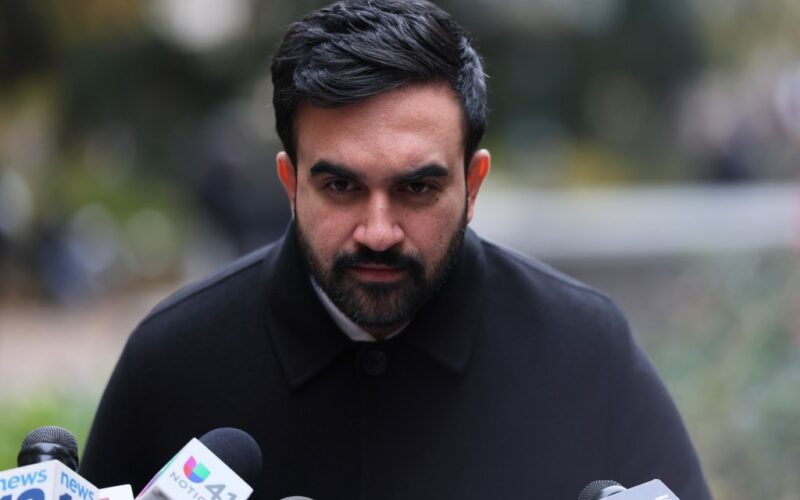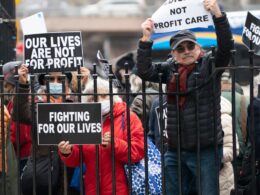As the longest-serving member of the city Rent Guidelines Board, and the only member appointed by Mayor Bill de Blasio, I voted for a rent freeze in 2020, during the early months of COVID. I also authored the RGB’s subsequent order to freeze the rent for an additional six months.
I agree with Zohran Mamdani that New York’s affordable housing crisis demands immediate attention. However, I disagree with Mamdani’s pledge to freeze the rents of all rent-stabilized housing for four years. The arguments in support of a multi-year rent freeze are misguided and the consequences of such a freeze would endanger the physical and financial viability of thousands of rent-stabilized buildings, many of which were built or preserved with taxpayer dollars.
The Misleading Argument for a Rent Freeze
Mamdani and many other advocates for a rent freeze emphasize that the RGB under Mayor Adams authorized higher increases than under the previous de Blasio administration. They highlight the fact that while one-year leases under Adams increased by a cumulative 12.5% over four years, they increased by just 5.5% over the eight years of the de Blasio administration, during which time the RGB froze the rent three times (in 2016, 2017, and 2020).
These points are true, but they are also misleading. First, they overlook the fact that until 2019, when Albany passed the Housing Stability and Tenant Protection Act (HSTPA), landlords could raise the rent outside of the RGB’s annual adjustments.
Before that law, they could raise the rent by 18% to 20% with each vacancy, and they could increase rents by a percentage of the cost of building-wide major capital improvements (MCI) (e.g., new roofs, boilers), and of individual apartment improvements (IAI) (e.g., remodeled bathrooms and kitchens).
Indeed, many landlords relied on vacancy, Major Capital Improvement, and Individual Apartment Improvement increases to trigger what was known as “luxury deregulation.” This means that when rents reached a certain threshold (in 2019 it was $2,775) landlords could remove the unit from rent stabilization and charge whatever the market would bear. More than 170,000 units were deregulated in this way between 1994 and 2020, with most of the deregulated units being in Manhattan.
HSTPA changed all this. It eliminated deregulation (with very few exceptions), it prohibited vacancy increases, and it greatly reduced the maximum rent increase allowed for MCIs and IAIs. Starting in 2019, the only way for landlords to increase rents of rent-stabilized apartments, apart from much-reduced MCIs and IAIs, was to apply the maximum allowable increase authorized by the RGB.
That’s not all. Inflation was exceedingly low during the de Blasio years, averaging just 1.6%. This was not the case under Adams. From January 2022 through September 2025, the consumer price index for the New York region increased at an average annual rate of 4.2%. As a result, the RGB’s rent increases during the Adams administration, after adjusting for inflation, were lower than under de Blasio. In fact, they were often negative, effectively delivering rent rollbacks.
The RGB staff calculates a “composite” rent adjustment for each year, combining one- and two-year increases (about half of all rent stabilized tenants opt for 2-year leases), and through 2019, vacancy increases. This composite measure, adjusted for inflation, averaged -0.96% during the first three years of the Adams administration (the final rent adjustment just went into effect last month, and we don’t know what the inflation rate will be).
By comparison, during the eight years of de Blasio’s term, the composite rent adjustment decreased by an average of -.22% (before COVID and the concurrent spike in inflation, the average increased by 0.72%). In sum, the RGB in both the Adams and de Blasio administrations authorized very low, often negative, rent increases after adjusting for inflation.
New York City’s rent increases are also consistently lower than those of other cities and states with rent regulation. Los Angeles, for example, recently amended its rent regulations to allow annual increases to range from 1% to 4%. However, the law allows landlords to reset rents at market-levels after each vacancy. The state of Oregon, sets annual rent increases at 6% for buildings with more than 30 units, and by the lesser of 10% or 7% plus the Consumer Price Index in smaller buildings.
The Consequences of a Rent Freeze
Without adequate rental income, landlords struggle to cover the cost of maintaining and operating their buildings and to meet their mortgage payments. A rent freeze, especially the multi-year freeze that Mamdani proposes, would put tens of thousands of rent-stabilized buildings in physical and financial peril.
A freeze on rents won’t stop the cost of insurance, repairs, utilities, and other essentials from increasing. Already, more than 9% of all rent stabilized buildings, 1,563 in total, are distressed, with operating costs exceeding income. And this does not include hundreds more whose income falls short of their combined operating costs and mortgage obligations. Even more buildings hover on the brink of insolvency.
The buildings most at risk were built before 1974 and have at least 80% of their units rent-stabilized. They are mostly located in low-income neighborhoods of the Bronx, upper Manhattan, and Brooklyn. Unlike their partially regulated counterparts in core Manhattan and the more affluent sections of Brooklyn, the owners of these buildings would not be able to offset the effects of a rent freeze by charging higher rents on their unregulated units.
A rent freeze would also wreak havoc on thousands of buildings that were built or preserved with city subsidies. New York City invested more than $35 billion, adjusting for inflation, since the late 1980s on more than 640,000 housing units for mostly low- and moderate-income households. Approximately 290,000 rental units in New York City currently benefit from city subsidies. Most of this housing is subject to rent stabilization; indeed, it constitutes more than 25% of all rent-stabilized housing.
Many of these properties are already in a precarious financial condition. In testimony to the RGB and in various reports, affordable housing groups have documented the worsening financial condition of city-subsidized housing. It is being squeezed by rapidly increasing expenses and declining revenue.
Since COVID, expenses have consistently outpaced the 3% or 4% annual increases that the city typically requires to be budgeted for its subsidized housing. Average property insurance premiums, for example, increased by more than 40% over the past two years. Concurrently, rental incomes have failed to increase at the budgeted rate of 2% or 3%, and have often declined due to growing rental arrears and other factors.
A recent study published by the Association for Housing and Neighborhood Development, a coalition of more than 80 nonprofit housing groups, found that of the 112,000 units of city-subsidized housing that they could match with Department of Finance records, more than half were in the red, with expenses exceeding income. A prolonged rent freeze would only worsen the crisis, and undermine New York City’s four decades of investment in affordable housing.
The Case for Rent Subsidies
Mamdani rightly recognizes the city’s housing affordability crisis. Nearly half of all renters spend more than 30% of their income on housing, and more than a quarter spend more than 50%. When people are rent-burdened they struggle to afford food, clothes, health care, transportation, and other necessities and are too often an emergency away from becoming homeless.
But a rent freeze would do little to improve affordability for rent-burdened tenants. Instead, the city could increase its already large rent subsidy program (CityFHEPS) to enable more low-income tenants to afford their rent-stabilized homes. The city could also expand existing rent freeze programs for seniors and people with disabilities to include other low-income renters. These programs currently freeze the rent for elderly and disabled rent-stabilized tenants with incomes of less than $50,000 who spend more than 30% of their income on housing.
The city reduces the property taxes for the owners of these apartments to offset uncollected rent increases. Better yet, the city could redesign these programs to ensure that participants spend no more than 30% of their income on rent. These solutions would be costly, but unlike a rent freeze they would actually address the city’s housing affordability crisis and help maintain the physical and financial health of its rent-stabilized housing.
There have been times when rent freezes were justified, but this is not one of them. Freezing the rent now, especially for multiple years in a row, would harm tenants and their homes.
Schwartz is the longest-serving member on the NYC Rent Guidelines Board and a professor of public and urban policy at the New School.








